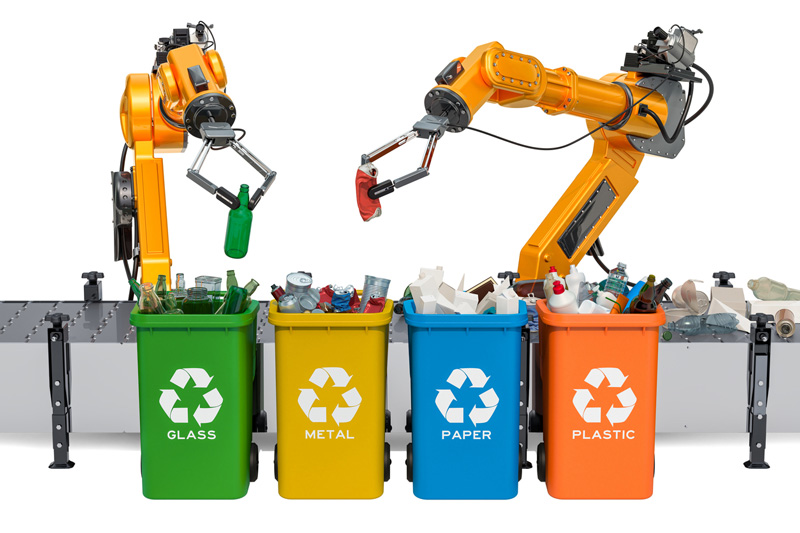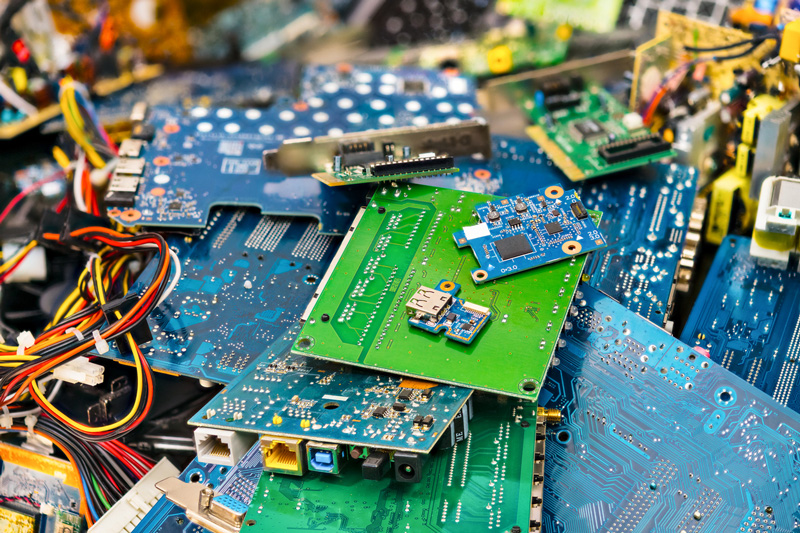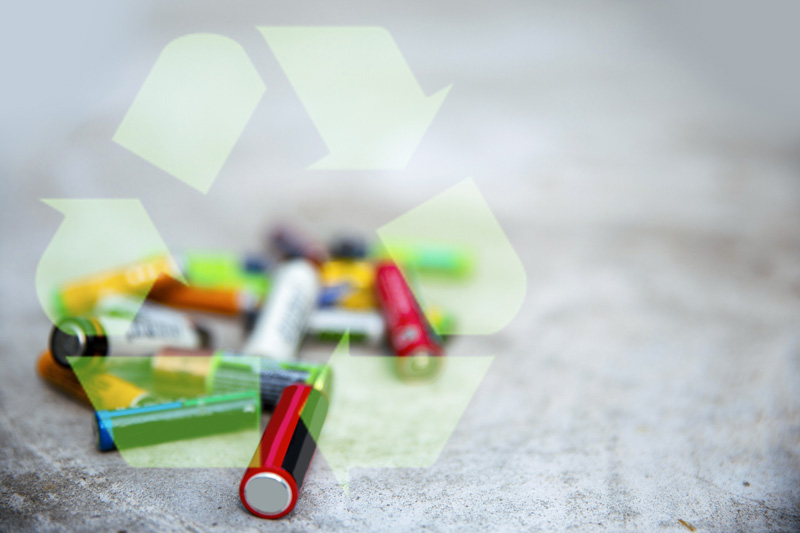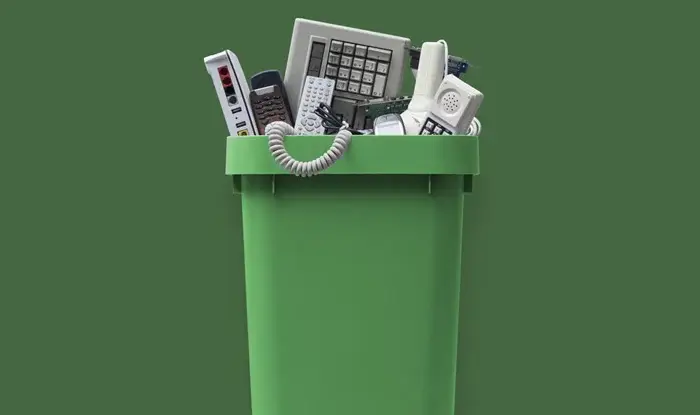To understand what the future holds for re-waste recycling and how it can be improved, it is essential to understand the present.
The current e-waste recycling and management services — while solutions of a kind — are not ideal for the planet or our species. These methods can be divided into two: e-waste that’s exported and e-waste that’s recycled at home.
- Almost half of US e-waste is exported
- How is the 60% of e-waste processed at home?
- Future trends in e-waste recycling that can mitigate the crisis
- 1. Advanced Sorting and Recycling Technologies
- 2. Improved Material Recovery Techniques
- 3. Circular Economy Integration
- 4. Internet of Things (IoT) and Smart Recycling
- 5. Global Collaboration and Standardization
- 6. Policy and Regulation Enhancements
- 7. Urban Mining
- 8. Consumer Awareness and Education
- 9. Localization of E-Waste Recyclers
- 10. Ethical E-Waste Recycling Methods
- Stay up to date with the latest in e-waste recycling
- FAQs
Almost half of US e-waste is exported
A Basel Action Network investigation of two years determined that from 2014 to 2016, US e-waste recyclers exported about 40 percent of American e-waste. 93 percent of it was sent to developing countries. Why is it an issue?
- Most developing nations cannot recycle these massive e-waste shipments as they have no basic infrastructure or e-waste management laws or e-waste recyclers to do so properly.
- They employ at-risk communities, often children, to sort through the e-waste.
- Final disposal is done through acid baths or incinerations that further harm the environment by polluting the air, soil, and water sources.
- Workers (which often include children) suffer catastrophic health conditions due to unsafe e-waste recycling practices.
- The transportation costs associated with e-waste exports only complicate the matter.
How is the 60% of e-waste processed at home?
Does the 60 percent of waste we do not send abroad fare any better?
That depends on the e-waste recycling company you hire to deal with the issue. Remember that half of the US has no laws or legislation for proper e-waste recycling. Individuals still throw their discarded phones and tablets in the trash and businesses can get away with substandard or unsafe IT asset disposal at the enterprise level.
So, faced with the complex e-waste crisis, environmentally responsible consumers find their own best solutions. One of those is local e-waste recyclers that comply with all the latest EPA guidelines and offer transparent e-waste recycling processes. The transparency ensures the e-waste they collect from you is recycled and disposed of as ethically as possible.
| Method | Availability | Environmental Impact | Key Concern |
|
Local EPA-Compliant Recyclers |
Limited | Low | Cost, convenience |
|
Non-Compliant Disposal |
Common | High | Illegal dumping, pollution |
|
Trash Bin / Landfill |
Frequent | Very High | Loss of valuable materials |
Future trends in e-waste recycling that can mitigate the crisis
If current e-waste recycling practices face challenges in bearing fruit, what does it say about the future of sustainable e-waste management?
Thanks to technological innovation and global reckoning, the hope for a waste-free future is alive and well. As people become more aware of the environmental impact of their throw-away consumerism and as more of them realize that tech manufacturers have created this culture to increase their profit margins, the tide has begun to turn.
E-waste recycling trends listed below are spearheading this mental and societal shift.
1. Advanced Sorting and Recycling Technologies
Can you use technology to answer issues created by technology?
Most definitely. In fact, that is the only path to follow.

Image Source: iStock/AlexLMX
As discussed in another article, novel technologies can be the most fitting and lasting answer to the rampant e-waste crisis.
Innovating tech solutions like artificial intelligence and robots can take over e-waste sorting from unskilled human labor and deliver more efficient results. Toxic e-waste fumes that harm human workers do not affect AI robots.
So equipping e-waste recycling facilities with these advanced robots can help reduce recycling costs, protect human workers from a physically toxic work environment, and perform the job 96% more accurately.
2. Improved Material Recovery Techniques
Our electronic devices are made with some of the rarest earth minerals and valuable materials. Gold, platinum, cobalt, tin, and other precious resources go into making every phone, TV, or iPad we use. Communities that mine these substances for global tech manufacturers often do so at grave risks to their health, safety, well-being, and human rights.

Image Source: iStock/Ladislav Kubeš
It’s ethically immoral to use these hard-earned minerals just once and then throw them in the bin.
Material recovery or e-waste mining is an opportunity to correct this attitude. Through material recovery, valuable raw materials are reclaimed from discarded devices and used for further manufacturing.
To reduce the toxicity of this process, better material recovery techniques are on the horizon. Chemical methods like hydrometallurgical processes recover gold, silver, and platinum from discarded electronics in eco-friendly ways. Bioleaching is another method where bacteria and other microorganisms separate valuable raw materials from electronic waste.
| Material | Common Device Found In | Environmental Impact of Mining |
|
Gold |
Phones, Laptops | High toxic chemicals are used |
|
Cobalt |
Batteries | Labor & health risks |
|
Platinum |
Electronics circuits | Water and soil contamination |
|
Tin |
Solder, PCBs | Deforestation, pollution |
3. Circular Economy Integration
The revenue from circular economy transactions is estimated to reach 713 billion U.S. dollars by 2026. This projection is more than double the 2022 revenue of 339 billion U.S. dollars. The figure shows that more and more economic segments are keenly investing in circular economy programs.

Image Source: iStock/ChayTee
For those unfamiliar with the circular economy, it’s a closed-loop manufacturing system where materials or goods within the economy are kept inside it for as long as possible through reuse, remanufacturing, and refurbishment. Products are made to last through constant repairs and throw-away attitudes are discouraged.
4. Internet of Things (IoT) and Smart Recycling
Innovative technologies like IoT, big data, cloud computing, and AI will be given center-stage in the future of e-waste recycling. Smart bins or e-bins are a revolutionary way to collect and manage e-waste. These bins, placed in public spaces, automate the process of e-waste sorting and recycling.
These bins can accurately assess recyclable parts and devices from non-recyclable ones and guide consumers on proper e-waste disposal.

Image Source: iStock/metamorworks
Integrating e-waste management with IoT devices can help recycling facilities better track their environmental impact, monitor devices as they go through various stages of recycling, and improve decision-making for manufacturers and recyclers.
IoT can also facilitate predictive maintenance of recycling facilities. Sensors can identify upcoming issues by analyzing parts or equipment that aren’t working optimally and keep the facility running efficiently at all times.
5. Global Collaboration and Standardization
One big reason behind the expansion of global e-waste is the lack of standardized tech manufacturing. Since each tech firm makes products the way they want, no two products from competing firms match, and repairing them becomes a nightmare. If you’re an Apple repair expert, fixing a Samsung phone can be a hassle and vice-versa.
Speaking of Apple, the company has been notorious for its refusal to publicize its repair manuals.
But that has changed.
In 2021, major Big Tech firms including Dell, Microsoft, Google, Vodafone, Lenovo, and more joined a global collective initiative, Circular Electronics Partnership, to identify opportunities to make their product lifecycles more circular and closed-loop. Among other things, it means creating modular products so parts can be easily separated and repaired for future use instead of the whole device being thrown away.
Apple has also slackened its repair regulations. It announced in April 2024 that it is expanding its third-party repair options for used Apple devices and parts. Once it becomes available to the public this fall, it will significantly increase the lifecycle of each Apple product, vastly reducing the e-waste strain on the economy.
6. Policy and Regulation Enhancements
Things are changing at the government level too. 25 states plus the District of Colombia so far have made it illegal to throw e-waste in with regular trash. Consumers, both individuals and businesses, have to take their e-waste to designated collection sites or use recommended e-waste recycling methods to properly dispose of their old electronics.
The Right to Repair Act also gained traction in 2023. In the U.S., four states enacted or made additions to their right-to-repair laws. These states included California, Colorado, Minnesota, and New York.
Since batteries are infamously hard to dispose of properly, government initiatives are designed to make the process easier and accessible. Washington has established a New Battery Stewardship Program. While the program won’t be implemented until 2027, it’s a roadmap to make battery recycling safe and sustainable for consumers.

Image Source: iStock/PhotoLife94
Through the program, battery producers and transporters are being funded and trained to handle battery recycling. Disposal facilities are also being set up so that once the program starts working, customers can come in and recycle batteries from phones, laptops, and flashlights easily and safely.
7. Urban Mining
Urban mining is like e-waste mining but with a wider scope.
When we mine e-waste, we only recover valuable materials from discarded electronics. With urban mining, we use different kinds of solid waste streams to harvest all the valuables we can from them. This includes plastics, concrete, tin, aluminum, and more.

Image Source: iStock/NicoElNino
Plastics are especially resistant to recycling and therefore it’s critical to come up with creative ways to reuse them again and again. Systems of reuse and refill are a great idea where instead of throwing away plastic bottles, we just take them to refill stations to stock up on our favorite shampoos, teas, and other daily item needs. Sustainable alternatives to plastic packaging are also a solution to think about.
As competition becomes fierce for valuable raw materials, their costs will rise. Since many precious raw metals needed to manufacture the latest electronics aren’t available locally in the developed world, countries in the EU have come together to think of inventive ways to mine valuable raw metals from existing waste streams.
8. Consumer Awareness and Education
As we go beyond 2024, consumer awareness and eagerness about sustainable ways of living will continue to increase. More and more people are looking for ways to adopt cleaner lifestyle solutions, and that will impact how customers engage with their electronics.
Movements like the Right to Repair are an indication that people are frustrated with ceaseless consumerism. They want access to methods and technologies where they can make a positive impact on the planet and contribute to its healing.
For our part as your local e-waste recyclers, we use our blog to inform and educate our communities about the value of e-waste recycling. Our resources include an e-waste glossary where you get to know all the terms and terminologies to understand the e-waste conversation better. We have also published pieces on the major types of electronic waste, how to prepare electronics for recycling, and eco-friendly waste management practices.
Through these discussions, we hope to cover the basics of IT asset disposal and e-waste recycling for commercial and household or residential consumers and increase their interest in what’s next to come in e-waste management.
9. Localization of E-Waste Recyclers
Another trend we see emerging in the future of e-waste recycling is the localizing of recycling services. The focus is shifting from centralized recycling to more grass-roots local services. Several factors support this shift:
- Local companies have a keener understanding of local e-waste hotbeds
- Local e-waste recyclers also know the specific e-waste issues their communities deal with
- Using local services vastly reduces transportation and other environmental costs of moving the e-waste from one location to the next
Another major reason why communities must look for local e-waste recyclers is free tech recycling. With free e-waste pickups and zero-cost recycling services, environmentally-focused companies like ours take money out of the equation.
We make professional and responsible e-waste recycling accessible to all. Free e-waste pickups especially are popular among clients as the options remove all the hassle from the process. Just call your local e-waste recycler, set up a time for pickup, and let them handle the rest.
These robust solutions will continue to increase in the future as e-waste recycling becomes widespread in homes and business communities.
10. Ethical E-Waste Recycling Methods
The future of sustainable IT asset disposal is ethical e-waste recycling. Ethical e-waste recycling exists at the intersection of environmental sustainability, worker safety, and responsible e-waste handling.

Image Source: iStock/Thawatchai Chawong
Ideally, all e-waste recycling should be ethical as ethics are embedded in the concept of recycling, but that’s not often the case. Most e-waste recyclers promote themselves as green companies but can be found trapped in issues of illegal dumping and landfilling.
We see that changing as time passes. Consumer awareness has brought with it the rejection of such practices. We see many companies now offer transparent e-waste recycling processes to attract customers.
More sustainable e-waste recycling methods like safe data destruction, a heightened focus on cybersecurity, and non-toxic methods of e-waste disposal are also seeing a rise.
Stay up to date with the latest in e-waste recycling
Technologies, consumer interest, and the worsening global crises will keep making the ground fertile for better, sustainable e-waste recycling solutions.
Collective action will invest resources in creating products that last longer, giving rise to thriving secondary electronics markets and a near future where we all use our products for longer and go to repair shops when devices break down.
Contribute to this healthy, greener future by watching this space for the latest in e-waste recycling, and use what you learn here to build better IT environments where reuse is normalized and e-waste is shunned.
FAQs
Are there certifications or labels to identify trustworthy e-waste recyclers?
Yes, look for certifications like R2 (Responsible Recycling) or e-Stewards, which indicate recyclers meet strict environmental, safety, and ethical standards. These certifications help ensure your e-waste is handled responsibly.
What happens to hazardous components like batteries and mercury-containing devices?
Specialized processes safely neutralize hazardous components to prevent environmental contamination. Batteries, for example, are often collected under stewardship programs and processed to recover metals safely without pollution.
Can I recycle electronics that are broken beyond repair?
Absolutely. Even non-functional electronics contain valuable materials and components that can be recovered. Recycling facilities can extract metals, plastics, and other materials, reducing landfill waste.


Leave a Reply